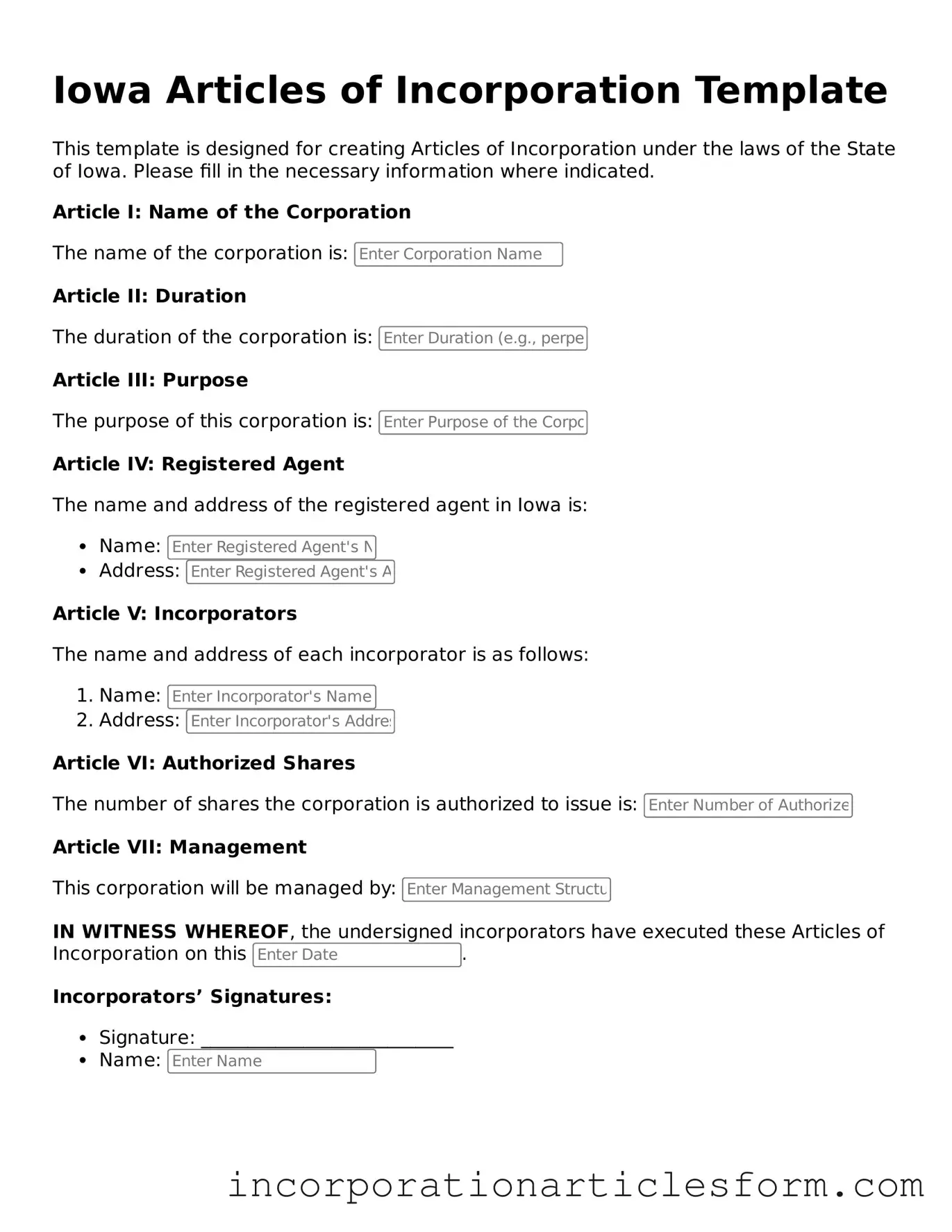The Iowa Articles of Incorporation form shares similarities with the Certificate of Incorporation, which is commonly used in many states. Both documents serve the same fundamental purpose: to legally establish a corporation. They outline essential information about the business, such as its name, purpose, and the number of shares it can issue. While the specific requirements may vary by state, the core objective remains consistent—creating a legal entity separate from its owners.
Another document that parallels the Iowa Articles of Incorporation is the Bylaws. While the Articles set up the corporation, Bylaws govern its internal operations. They detail the rules for managing the corporation, including how meetings are conducted, how directors are elected, and the responsibilities of officers. Both documents are essential for a corporation’s existence, but they serve different functions in the organizational structure.
The Operating Agreement is similar to the Articles of Incorporation but is specifically for Limited Liability Companies (LLCs). This document outlines the management structure, ownership, and operational procedures of the LLC. Like the Articles, it is a foundational document that helps define the entity's structure and protects the owners' interests. While the focus is on LLCs rather than corporations, the purpose of establishing a legal entity remains the same.
The Partnership Agreement also bears resemblance to the Articles of Incorporation, particularly for partnerships. This document outlines the terms of the partnership, including the roles and responsibilities of each partner, profit-sharing arrangements, and dispute resolution methods. Both the Partnership Agreement and the Articles of Incorporation are crucial for defining the structure and operations of a business, although they cater to different types of entities.
The Certificate of Good Standing is another important document that complements the Articles of Incorporation. This certificate verifies that a corporation has been properly formed and is compliant with state regulations. While the Articles of Incorporation initiate the formation process, the Certificate of Good Standing confirms that the corporation is active and authorized to conduct business. Both documents are vital for establishing credibility with clients and partners.
The Statement of Information is similar to the Articles of Incorporation in that it provides essential details about a corporation. This document typically includes information about the corporation's address, officers, and registered agent. While the Articles establish the corporation, the Statement of Information keeps the state informed about any changes, ensuring that the corporation remains compliant with regulations.
The Application for Employer Identification Number (EIN) is another document that works in conjunction with the Articles of Incorporation. An EIN is necessary for tax purposes and is often required when opening a business bank account. While the Articles of Incorporation lay the groundwork for the corporation, the EIN allows it to operate legally and fulfill its tax obligations.
The Annual Report is similar in purpose to the Articles of Incorporation, as it provides ongoing information about the corporation’s status. This report is typically filed yearly and includes updates on financial performance, changes in management, and other critical information. Both documents are essential for maintaining the corporation's good standing and transparency with state authorities.
The Shareholder Agreement also shares similarities with the Articles of Incorporation. This document outlines the rights and obligations of shareholders, including how shares can be transferred and how decisions are made. While the Articles of Incorporation establish the corporation's existence, the Shareholder Agreement governs the relationships between those who own shares, ensuring clarity and reducing potential conflicts.
Lastly, the Corporate Resolution is akin to the Articles of Incorporation in that it documents decisions made by the corporation’s board of directors or shareholders. This document is used to record important actions, such as approving major contracts or appointing officers. Both the Articles of Incorporation and Corporate Resolutions are integral to the governance of a corporation, ensuring that decisions are made in accordance with established rules and procedures.
